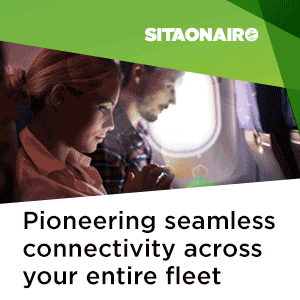Runway Girl Network recently sat down with Emirates SVP IT Strategic Services Neetan Chopra to discuss the evolution of the company’s technology portfolio and the various data mining solutions being explored by an airline that moves nearly 52 million passengers annually. In the second part of our two-part series, Chopra speaks about the evolution of Passenger Service Systems (PSS) to meet the needs of modern data exchange, and the airline’s block-chain and IoT work. Back-office systems covering everything from loyalty to maintenance will be impacted by these evolving platforms and Emirates is putting them into play in a major way, as well as mulling new approaches like creating an AI platform to aggregate artificial intelligence data.
One of the things you talked about in your presentation is how technology stacks are evolving, especially for end users. Unfortunately, we’re still on the legacy global distribution system (GDS) platforms for the most part, but how consumers interact is changing. The underlying GDS technology isn’t necessarily ready to catch up. Given the fact that you’re still dependent on GDS interoperability with everybody else, is there anything you can do?
NC: I think the wonderful bit there from a technology perspective is Emirates has its own PSS. We’re one of the few airlines which, for our core commercial and operational arenas, built our own systems. We develop our own systems. I think the stacks are changing fairly significantly right from the bottom, whether it’s the end of Moore’s law in 2020 people project, because it’s got down to the atom size – you can’t squeeze it any further – to quantum computing and neuromorphic computing. And right at the top of the stack where today everybody carries a smartphone [rather than using a traditional computer]. The whole stack and maybe computing between is changing.
Does that impact the way that you can deal with the external parties was the other question. I’m not too sure that’s an issue to be very honest. Of course, if you are tied up in a time horizon then that has an impact. But in terms of exchange of data, I think with the API economy you can abstract out what you are doing significantly enough to be able to integrate with another third party. Both from the world of asynchronous messaging, as well as the API economy, I think these two really facilitate integrating with these external parties. Even if somebody is in a bit more of a legacy environment, if they structured it out to an API layer, the API layers can talk to each other. I must, however, say that eventually all organizations need to have a plan for the legacy. You can’t just leave it there forever.
Passenger counts were, for a brief period of time, rising exponentially but traffic is now much more linear even for Emirates. Are you able to differentiate between the idea of exponential growth in app adoption and the much slower rate of growth in passenger count? You still have to move bags, you still have to move people. How much of what you’re doing with app development really changes because passenger counts, even in the best case, is not exponential growth anymore?
NC: That’s a valid observation that you make. My kind of pitch says it is not just limited to what is happening in terms of growth of the market per se. My thinking there is to learn from how digital natives operate in an exponential world and how we can include some of that internally. I view exponential potential in a lot of our business areas, such as operations. There’s so much optimization potential in operations. I think if you see it from that lens, you will find areas for exponential impact, whether it be cost, customer service, or sometimes even revenue. Exponential impact on your business in your business model – I think that’s what I was more alluding to.
I think companies need to start looking at their businesses from their exponential potential and learn from these [startup] guys who are already doing it.
You’re part of the Emirates Innovation Lab, helping run that group as well. Other than project Helix (mentioned here), what other cool projects do you have going on there that you’re allowed to talk about?
NC: There are a lot of things are going on. One is Helix that we’ve already covered. Another one, as I said, we are working with this set of startups with two hypotheses: one is about what is the next level of personalization in real time. That’s one and we’re working with a start-up out of MIT, another one out of Singapore. We are working on those.
The second hypothesis that we are asking is, “Can we create that AI platform which allows humanity’s artificial intelligence to be aggregated for Emirates in real time? Can we create a platform?” We’ve called a number of startups as well as new companies. IBM, Watson, GE, we’re experimenting with that. That’s another very interesting part.
I think the third hypothesis, as I said is around block-chain. We got one big pilot which is the loyalty pilot. We are saying, “Can we orchestrate a partnership ecosystem using block-chain and eventually getting to peer to peer?” These are hypothesis. These are business experiments, and when I say business experiments we put them in front of our customers in a curated manner. That’s going on.
 There are a couple of other loyalty, other block-chain pilots which are ongoing, and still in a more conceptual stage around logistics and management of the import, export process. We probably will look at Dubai and do something.
There are a couple of other loyalty, other block-chain pilots which are ongoing, and still in a more conceptual stage around logistics and management of the import, export process. We probably will look at Dubai and do something.
The other is provenance. It started from the diamond industry where people wanted to know where this diamond is actually, where it has gone, the like, like a timeline, like a Facebook timeline. Similar kinds of patterns exist in our spare parts. You want to build a provenance of this spare part. We might do a pilot in that stage.
Block-chain, the artificial intelligence data, and then on the edges the guys are very eager to look at all sorts of technology. We have a lot of IoT pilots. We took a whole hangar in engineering and did a pilot on smart hangar, tracking and tracing various stuff that moves through the hangar… That’s another one.
Then, natural user interfaces, we created a wall, a simple wall like this which becomes smart. It becomes like the smart interface. Some of these things we expanding.
How’s the IoT hangar process going?
NC: There’s lot of investment, a lot of vendors are interested. It’s a very, very active field. As part of the pilot we wanted to trial different kinds of sensors to see what is the best use case. That is now done. Of course, once the innovation pilot gets over, then we go into the proper execution phase where we look at vendors in all their dimensions and evaluate the right partner to work with.
This first part that you’ve completed was mostly just about understanding how the different sensors work in the environment?
NC: Yeah, but one of the things we did in the innovation lab is not just do a pilot like a POC, you know, tech pilot. We actually take up business areas and we implement it at least for a period of time and then after that then we go live from a different process.
Related Articles:









